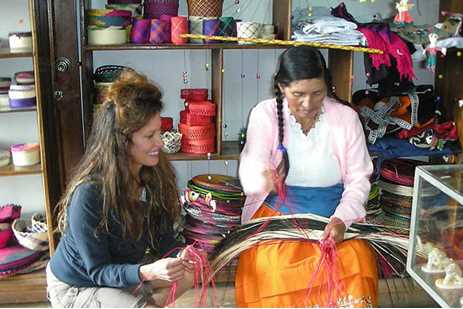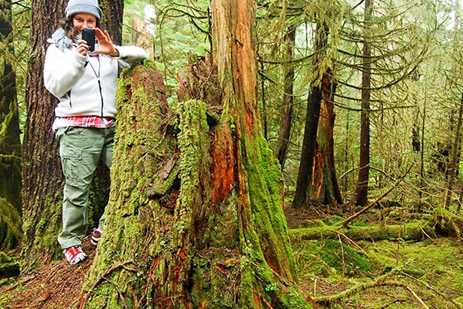In exploring new craft terrain, Stacy has indeed helped. The programs she has implemented in Galápagos are perfect examples. Due to the isolation of the islands, artisans need to import many of their materials. The Galápagos is also 97% National Park, so all consumer waste has to be exported to the mainland. The Artisan Fund’s training programs and support help turned motivated locals into skilled artisans, adaptively reusing Galápagos’ trash—specifically paper waste and bulky glass—by turning them into works of art.
Now 40% of the galleries and shops on Santa Cruz island in the Galápagos offer recycled glass and paper objects of beauty and utility. The Artisan Fund also conducted several workshops including a “Recycled Materials Jewelry Making Workshop” and a “Glass Adaptive Reuse Workshop” for the emerging artisans of San Cristobal Island, helping them improve their craft.
Stacy has been instrumental in helping Haida Gwaii artists restore their craft traditions. She has also blazied new trails—working to help new craft communities develop their potentials in the Peruvian Amazon and Panama. A founding member of the State Department’s Alliance for Artisan Enterprises, a public/private partnership between the Aspen Institute and the State Department, Stacy was also inducted in 2016 into the Society of Women Geographers for her work.




